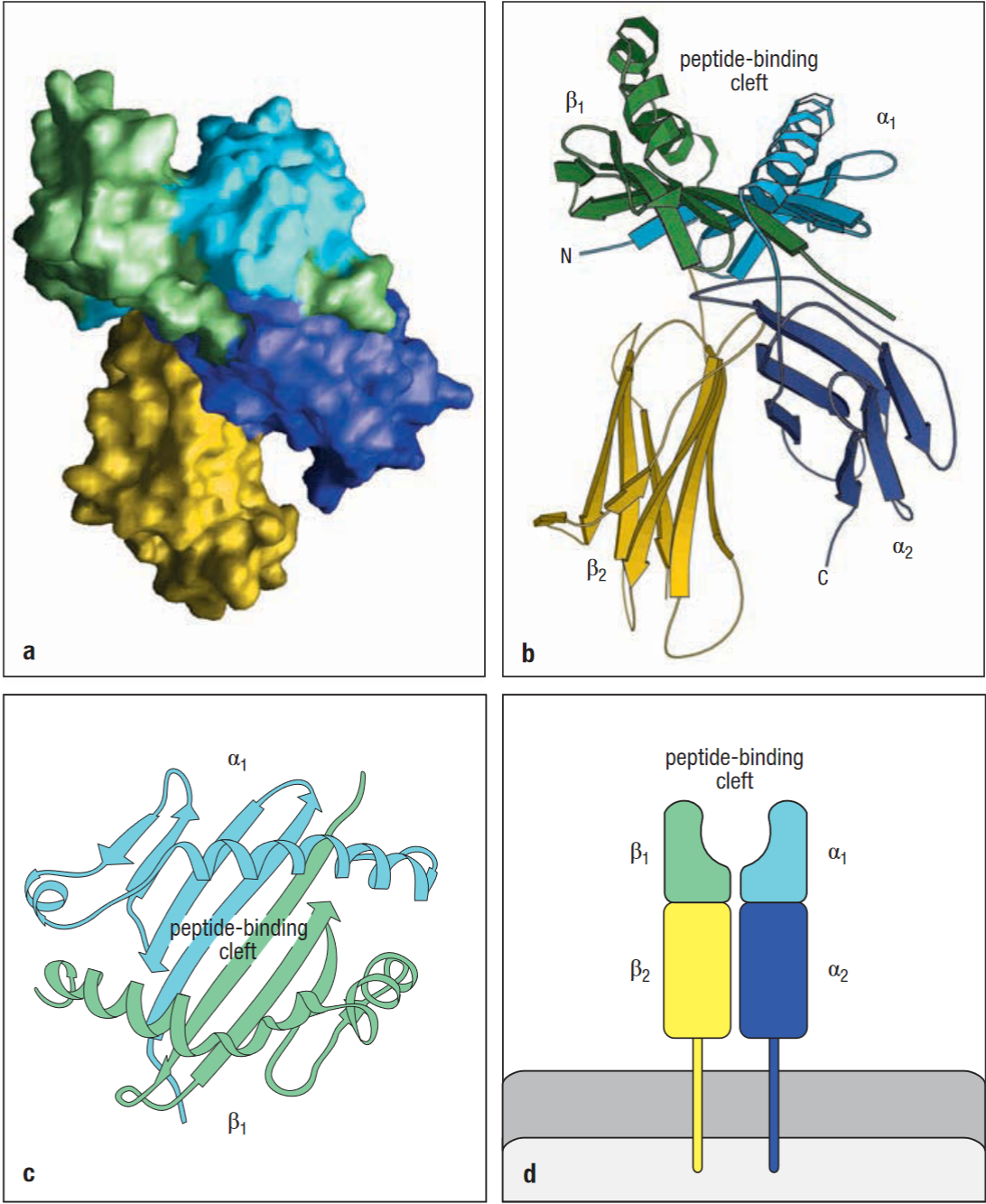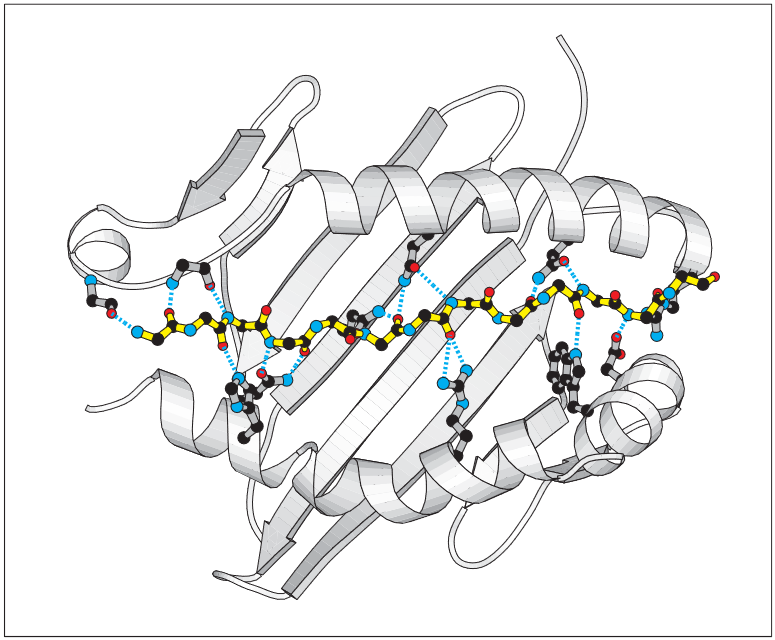MHC class II
Subtype of MHC

Similarly to MHC class I molecules there are two chains α and β. Whilst the structure is similar there are two B2 domains in Class II molecules, with the second domain spanning the membrane in addition to the α2 domain.

The major difference lie in the ends of the peptide-binding cleft which are more open in class II molecules, and therefore able to bind longer peptides. Natural peptides that bind to MHC class molecules are at least 13 amino acids long and can be much longer. The clusters of conserved residues that bind the two ends of a peptide in class I are not found in class II molecules.
The peptide is held in place by peptide side chains that interact with shallow and deep pockets lined by polymorphic residues, and by interactions between the peptide backbone and the side chains of conserved amino acids that line the peptide-binding cleft. The binding pockets of MHC class II molecules accommodate a greater variety of side chains than those of class I molecules.
Tip
Structural data shows amino acid side chains at residues 1, 4, 6 and 9 can interact with the pockets in the cleft.
As peptides can vary in length, the first anchor residue is denoted position 1.
Peptides normally have the following properties at certain positions:
| Position | Note |
|---|---|
| 1 | Hydrophobic residue |
| 4 | Negatively charged residue (D,E) |
| 6 | (Normally) Basic residue (K,R,H,N) |
| 9 | Hydrophobic residue (Y,F,L) |
Because the peptide is bound by its backbone and allowed to emerge from both ends of the binding groove there is no upper limit on the length of the peptides that can bind to class II molecules (e.g. invariant chain).
Peptide:MHC class II formation
Antigen Processing
DCs - activating CD4+ t-cell. macrophage, b-cells - recruiting help from CD4+ t-cell, for example mycobacteria (that causes TB), replicate in the intracellular vesicles, and thus don’t interact with the immunoproteasome for MHC class I presentation. Instead, after the macrophage is activated, the pathogens are degraded by intra-vesicular proteases
2023-10-13T19:31